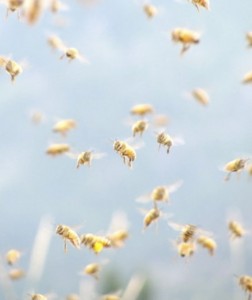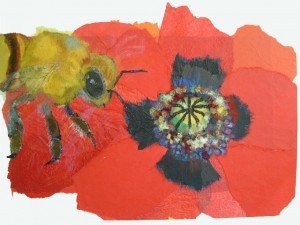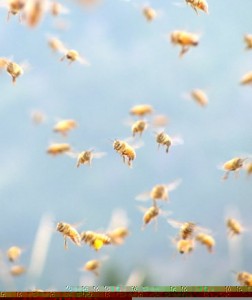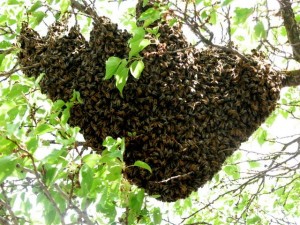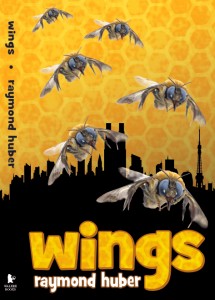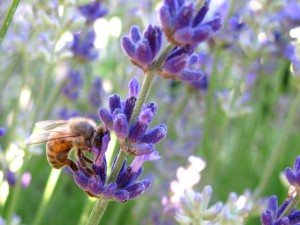Flight of the Honey Bee Launch
Thursday, August 1st, 2013This handsome, respectful volume deserves a place on the shelf … it succeeds in accurately dramatizing honeybee behavior. – Kirkus Reviews
Flight of the Honey Bee review by artist, Claire Beynon:
“Given the state of our environment, the sooner we introduce our children to bees – to their intelligence, their intricate behaviour and increasing vulnerability – the better. Flight of the Honey Bee is the perfect book to do this, combining as it does Raymond Huber’s careful language and well-researched text with Brian Lovelock’s meticulously observed paintings. Cleverly formatted, fiction and non-fiction – story and fact – are woven together as two discreet yet interconnected strands: young readers can choose their flight path.
Exquisite to look at and a pleasure to explore.
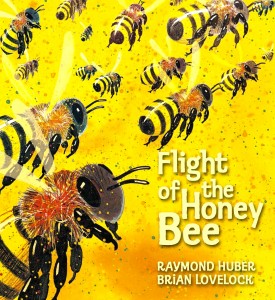 Scout the bee – named after the feisty protagonist in Harper Lee’s To Kill A Mockingbird – and her tightly-knit community of hardworking bees demonstrate these small creatures’ importance in the pollinaton of plants and the well-being of our planet. Flight of the Honey Bee is about bee behavior but it will also teach children about subtler things; wonder, beauty, the value of group functioning and collaborative effort, reproduction, risk, courage, the joys of flight – those rhythms and principles essential for any thriving community. The hum of the parts.
Scout the bee – named after the feisty protagonist in Harper Lee’s To Kill A Mockingbird – and her tightly-knit community of hardworking bees demonstrate these small creatures’ importance in the pollinaton of plants and the well-being of our planet. Flight of the Honey Bee is about bee behavior but it will also teach children about subtler things; wonder, beauty, the value of group functioning and collaborative effort, reproduction, risk, courage, the joys of flight – those rhythms and principles essential for any thriving community. The hum of the parts.
This book has all the essentials of a satisfying story: it asks questions and it informs. It invites observation and participation. There’s drama. Suspense. Conflict. Danger. Hope. And a happy ending. At the close of her adventure, Scout is a wily-er bee than she was when she set out from her hive on her first nectar-seeking adventure. As all characters must, she grows through her experiences. We come to care about her and her safe passage home.
Visually, Flight of the Honey Bee is exquisite to look at and a pleasure to explore – each double page spread is as stunning as the one preceding it. It will be immediately appealing to young readers. I was struck by how beautifully integrated the text and images are; they belong together like honey and honeycomb. The language is tender and witty (the line about ‘sun-powder’ is a wonderful change from ‘gun-powder’); and the paintings – a combination of watercolour, acrylic ink and coloured pencils – are spectacular; compositionally bold, delicate, exuberant and information-rich. Looking at them through my adult eyes, I can’t help thinking about fractals, the mathematics inherent in nature, the ever-present background dialogue between shape and sound, pattern and colour. Children will pore over them. And they will love Scout for her feisty resourcefulness.
More Flight of the Honey Bee reviews.
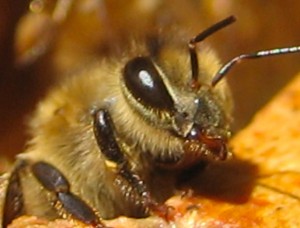 The EU has banned the nerve agent that has been contributing to honey bee decline around the world. The scientific evidence against these extremely toxic nicotine-based pesticides has grown steadily. Honey bees have contributed to our survival for the past 20,000 years and it’s time we showed them similar courtesy. These banned pesticides are still widely used on NZ crops (eg.corn) and sold to the public in garden centres (eg. the Confidor brand). Bee photo by Sophie Huber.
The EU has banned the nerve agent that has been contributing to honey bee decline around the world. The scientific evidence against these extremely toxic nicotine-based pesticides has grown steadily. Honey bees have contributed to our survival for the past 20,000 years and it’s time we showed them similar courtesy. These banned pesticides are still widely used on NZ crops (eg.corn) and sold to the public in garden centres (eg. the Confidor brand). Bee photo by Sophie Huber.